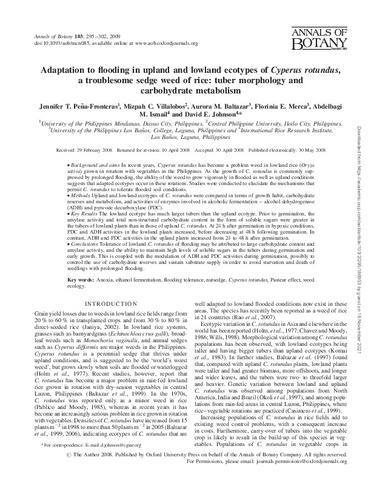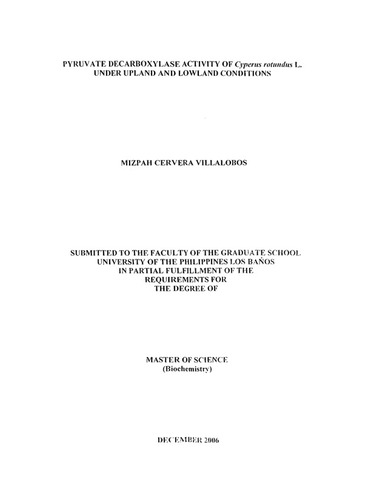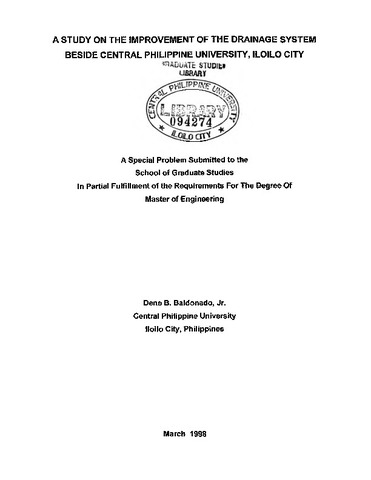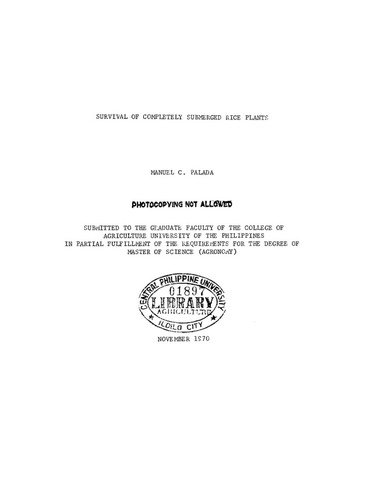Показать сокращенную информацию
Adaptation to flooding in upland and lowland ecotypes of Cyperus rotundus, a troublesome sedge weed of rice: Tuber morphology and carbohydrate metabolism
| dc.contributor.author | Villalobos, Mizpah C. | |
| dc.contributor.author | Baltazar, Aurora M. | |
| dc.contributor.author | Merca, Florinia E. | |
| dc.contributor.author | Ismail, Abdelbagi M. | |
| dc.contributor.author | Johnson, David E. | |
| dc.contributor.author | Peña-Fronteras, Jennifer T. | |
| dc.date.accessioned | 2021-11-22T01:07:18Z | |
| dc.date.available | 2021-11-22T01:07:18Z | |
| dc.date.issued | 2008-05-30 | |
| dc.identifier.citation | Peña-Fronteras, J. T., Villalobos, M. C., Baltazar, A. M., Merca, F. E., Ismail, A. M., & Johnson, D. E. (2009). Adaptation to flooding in upland and lowland ecotypes of Cyperus rotundus, a troublesome sedge weed of rice: Tuber morphology and carbohydrate metabolism. Annals of Botany, 103(2), 295-302. | en_US |
| dc.identifier.issn | 1095-8290 | |
| dc.identifier.issn | 0305-7364 | |
| dc.identifier.uri | https://hdl.handle.net/20.500.12852/1700 | |
| dc.description | Journal article | en_US |
| dc.description.abstract | Background and aims In recent years, Cyperus rotundus has become a problem weed in lowland rice (Oryza sativa) grown in rotation with vegetables in the Philippines. As the growth of C. rotundus is commonly suppressed by prolonged flooding, the ability of the weed to grow vigorously in flooded as well as upland conditions suggests that adapted ecotypes occur in these rotations. Studies were conducted to elucidate the mechanisms that permit C. rotundus to tolerate flooded soil conditions. Methods Upland and lowland ecotypes of C. rotundus were compared in terms of growth habit, carbohydrate reserves and metabolism, and activities of enzymes involved in alcoholic fermentation – alcohol dehydrogenase (ADH) and pyruvate decarboxylase (PDC). Key Results The lowland ecotype has much larger tubers than the upland ecotype. Prior to germination, the amylase activity and total non-structural carbohydrate content in the form of soluble sugars were greater in the tubers of lowland plants than in those of upland C. rotundus. At 24 h after germination in hypoxic conditions, PDC and ADH activities in the lowland plants increased, before decreasing at 48 h following germination. In contrast, ADH and PDC activities in the upland plants increased from 24 to 48 h after germination. Conclusions Tolerance of lowland C. rotundus of flooding may be attributed to large carbohydrate content and amylase activity, and the ability to maintain high levels of soluble sugars in the tubers during germination and early growth. This is coupled with the modulation of ADH and PDC activities during germination, possibly to control the use of carbohydrate reserves and sustain substrate supply in order to avoid starvation and death of seedlings with prolonged flooding. | en_US |
| dc.language.iso | en | en_US |
| dc.publisher | Oxford University Press | en_US |
| dc.relation.uri | https://academic.oup.com/aob/article-pdf/103/2/295/16995101/mcn085.pdf | en_US |
| dc.subject.lcsh | Cyperaceae | en_US |
| dc.subject.lcsh | Weeds | en_US |
| dc.subject.lcsh | Plants--Effect of floods on | en_US |
| dc.subject.lcsh | Weeds--Effect of floods on | en_US |
| dc.subject.lcsh | Floods | en_US |
| dc.subject.lcsh | Plant morphology | en_US |
| dc.title | Adaptation to flooding in upland and lowland ecotypes of Cyperus rotundus, a troublesome sedge weed of rice: Tuber morphology and carbohydrate metabolism | en_US |
| dc.type | Article | en_US |
| dc.citation.firstpage | 295 | en_US |
| dc.citation.lastpage | 302 | en_US |
| dc.citation.journaltitle | Annals of Botany | en_US |
| dc.citation.volume | 103 | en_US |
| dc.citation.issue | 2 | en_US |
| local.subject | Anoxia | en_US |
| local.subject | Ethanol fermentation | en_US |
| local.subject | Flooding tolerance | en_US |
| local.subject | Nutsedge | en_US |
| local.subject | Cyperus rotundus | en_US |
| local.subject | Pasteur effect | en_US |
| local.subject | Weed ecology | en_US |
| local.subject.scientificname | Cyperus rotundus | en_US |
| dc.identifier.doi | 10.1093/aob/mcn085 |
Файлы в этом документе
Данный элемент включен в следующие коллекции
-
Journal articles [12]





